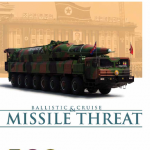
Many countries view ballistic and cruise missile systems as cost-effective weapons and symbols of national power. In addition, they present an asymmetric threat to US airpower. Many ballistic and cruise missiles are armed with weapons of mass destruction. Ballistic and cruise missiles present a significant threat to US and Allied forces overseas, and to the United States and its territories. Missiles are attractive to many nations because they can be used effectively against an adversary with a formidable air defense system, where an attack with manned aircraft would be impractical or too costly. In addition, missiles can be used as a deterrent or an instrument of coercion. Missiles also have the advantage of fewer maintenance, training, and logistic requirements than manned aircraft. Even limited use of these weapons could have devastating consequences because missiles can be armed with chemical, biological, or nuclear warheads.
